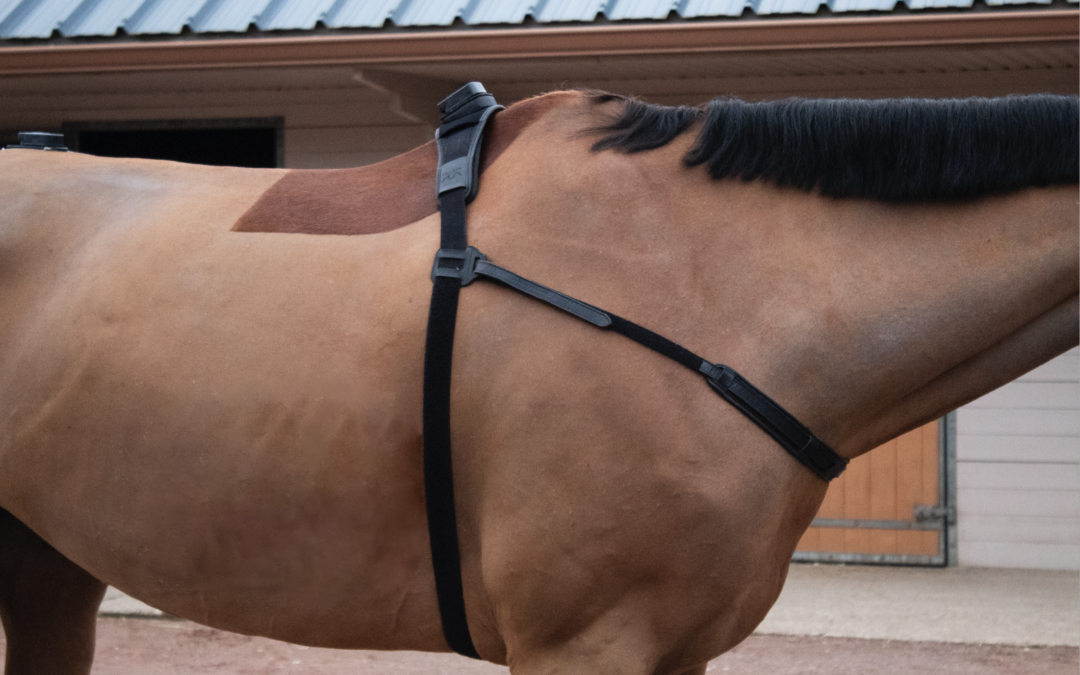When buying a horse, whether for competition or leisure, there are many issues at stake, and the animal’s health is an indisputable priority. The pre-purchase veterinary visit is therefore of paramount importance, enabling potential buyers to make informed decisions and minimize the risks associated with their investment. However, this assessment often requires a combination of subjective observation and professional expertise to detect potential health or locomotion problems.
By using advanced motion sensor technologies such as EQUISYM, the veterinarian can take an objective and accurate approach to assessing a horse’s physical condition and locomotion, providing essential information to guide purchasing decisions.
Objective evaluation of locomotion
When buying a horse, it’s essential to accurately assess his locomotion. However, this assessment can sometimes be subject to subjective bias and personal interpretation, which can make it difficult for potential buyers to make informed decisions.
EQUISYM offers an objective and precise approach to evaluate a horse’s locomotion. By using precise sensors to measure the vertical movements of the horse’s topline during activity, it provides measurable physiological data that eliminates guesswork and subjective interpretations. In fact, the sensors measures the vertical displacements of the head, pelvis and withers. When the horse trots, its head and torso move up (suspension phase) and down (stance phase), describing more or less regular sinusoidal curves.
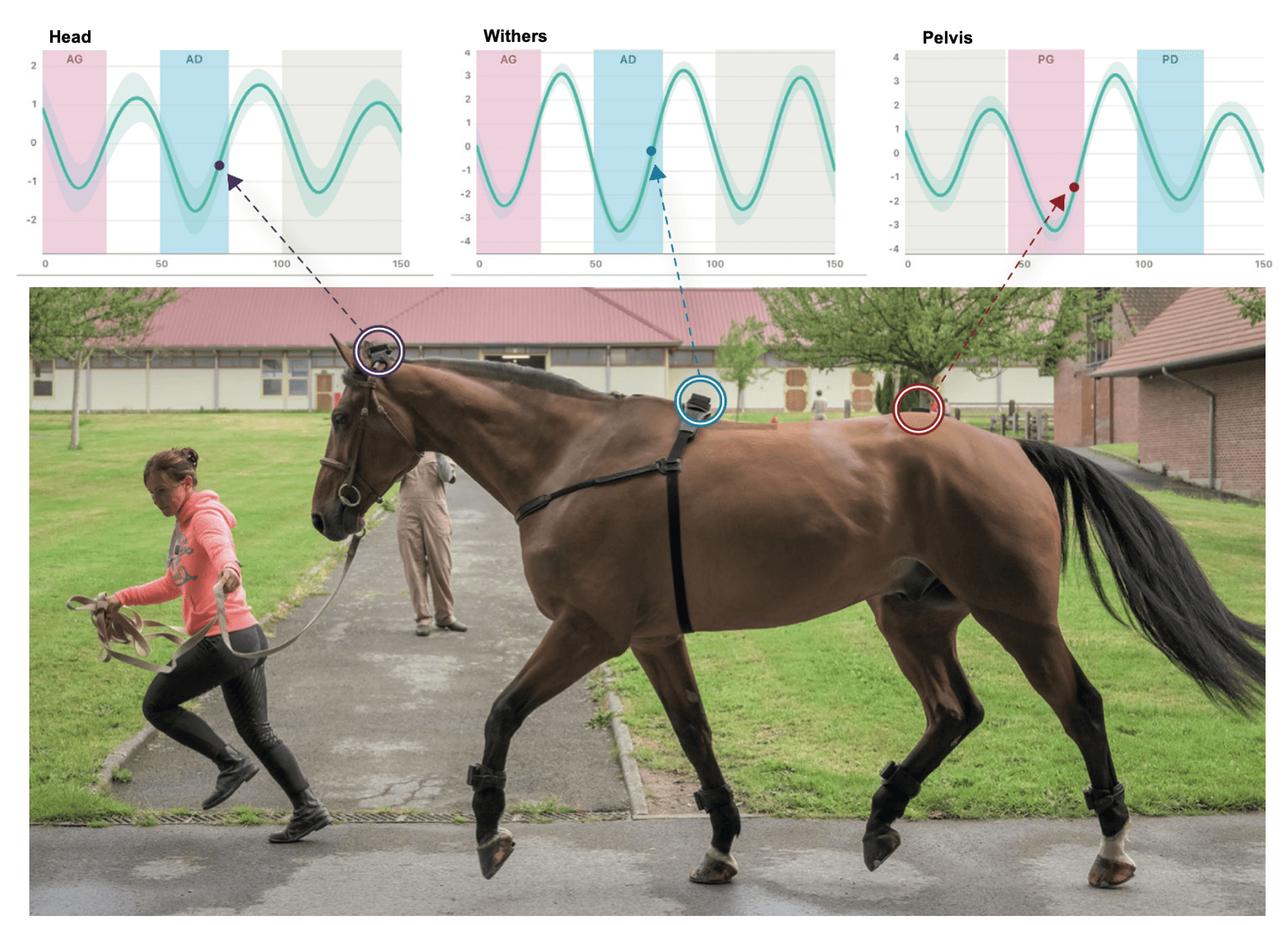
By objectively quantifying the horse’s locomotion, EQUISYM offers potential buyers an accurate view of the horse’s locomotion symmetry at the time of purchase.
Comprehensive information to help decision-makers, and to provide proof of any problems that may arise
Sometimes, even minor locomotor health problems are ignored or downplayed by the parties involved, whether buyer or seller. In such situations, EQUISYM provides objective data on the horse’s locomotion.
Veterinarians can confirm their feelings and use this data to provide tangible evidence of potential problems, even if they are not necessarily major locomotor disorders. Evidence that can be easily explained thanks to the video function, enabling the vet to explain his or her feelings by showing the video and then superimposing the data on it. For example, subtle asymmetries in the horse’s movements may indicate irregularities that could develop into more serious problems if left untreated.
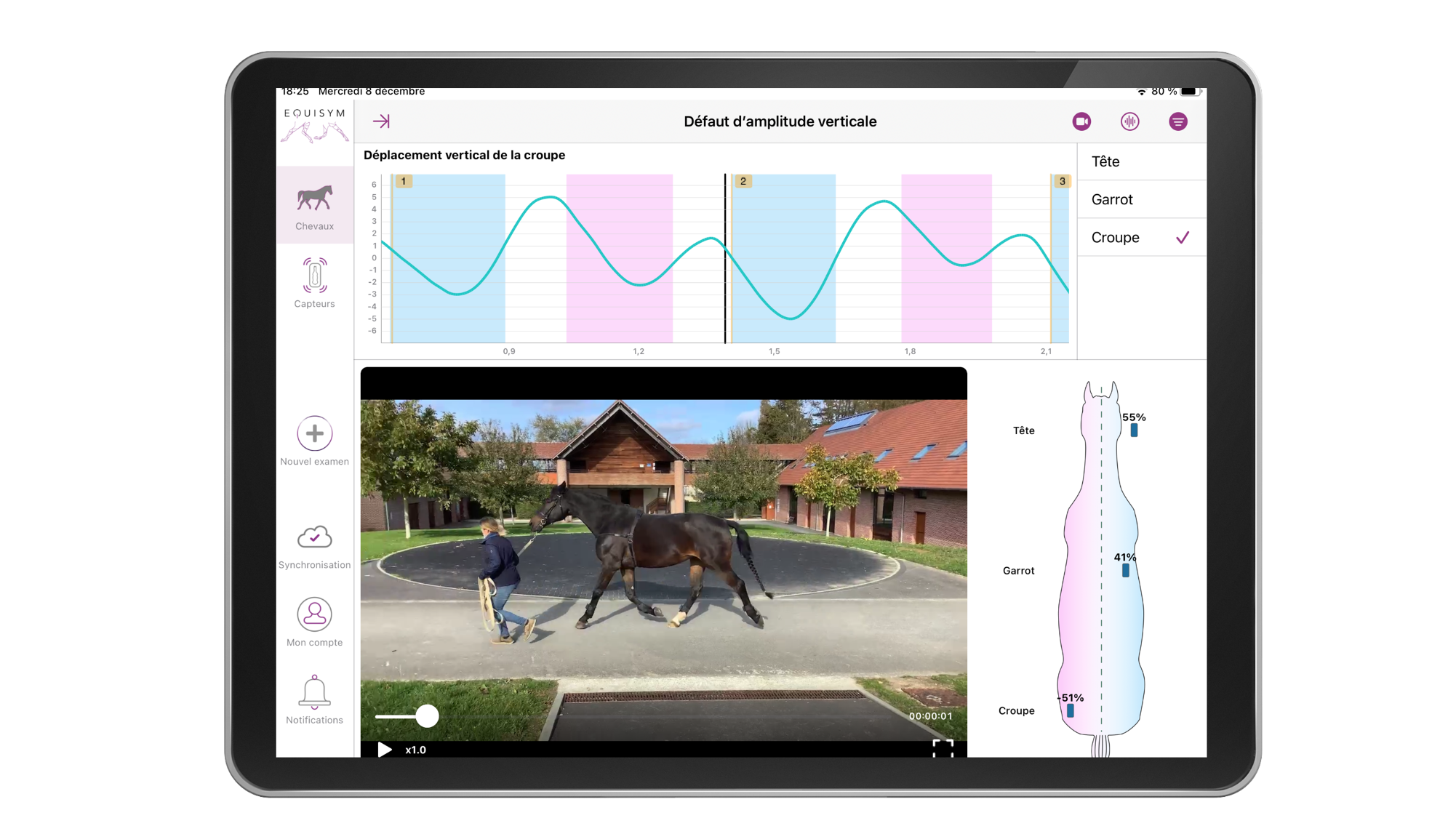
This increased transparency is particularly valuable for veterinarians, enabling them to carry out their professional duties in an ethical and impartial manner. Rather than finding themselves in the awkward position of having to choose between the customer’s interest and their own professional integrity, veterinarians can rely on the data provided by EQUISYM to provide objective, evidence-based recommendations.
What’s more, this increased transparency also facilitates communication between buyer and seller. By presenting tangible evidence of potential problems, vets can help set realistic expectations and facilitate open and honest discussions about the horse’s health and welfare.
I have an anecdote in mind about a pre-purchase exam. Very often in this kind of transaction, when we detect an anomaly, we come up against two problems: the seller, who doesn’t necessarily want to see it, and the buyer, who doesn’t want to see it either, because he’s already in love with the horse.
On this occasion, I used EQUISYM to objectify what I had seen and what nobody wanted to hear. We fitted the horse with the sensors, and it confirmed the locomotion analysis that had been done. This calmed everyone down, because it was no longer the vet who was the justice of the peace and who decided on a financial transaction, it was a device that quantified an anomaly.
It didn’t cancel the sale; on the contrary, it reassured everyone by quantifying the defects he had. The horse was still sold, and we were able to set up a treatment plan directly, and today everything is going smoothly. When the buyer bought the horse, he had an overall picture of the horse, including the anomalies. And he bought it because we were able to quantify them.
EQUISYM uses the latest state-of-the-art motion sensor technology to detect locomotor asymmetries at the earliest stages of development, thanks to three key parameters. These asymmetries can be early signs of potential locomotor problems.
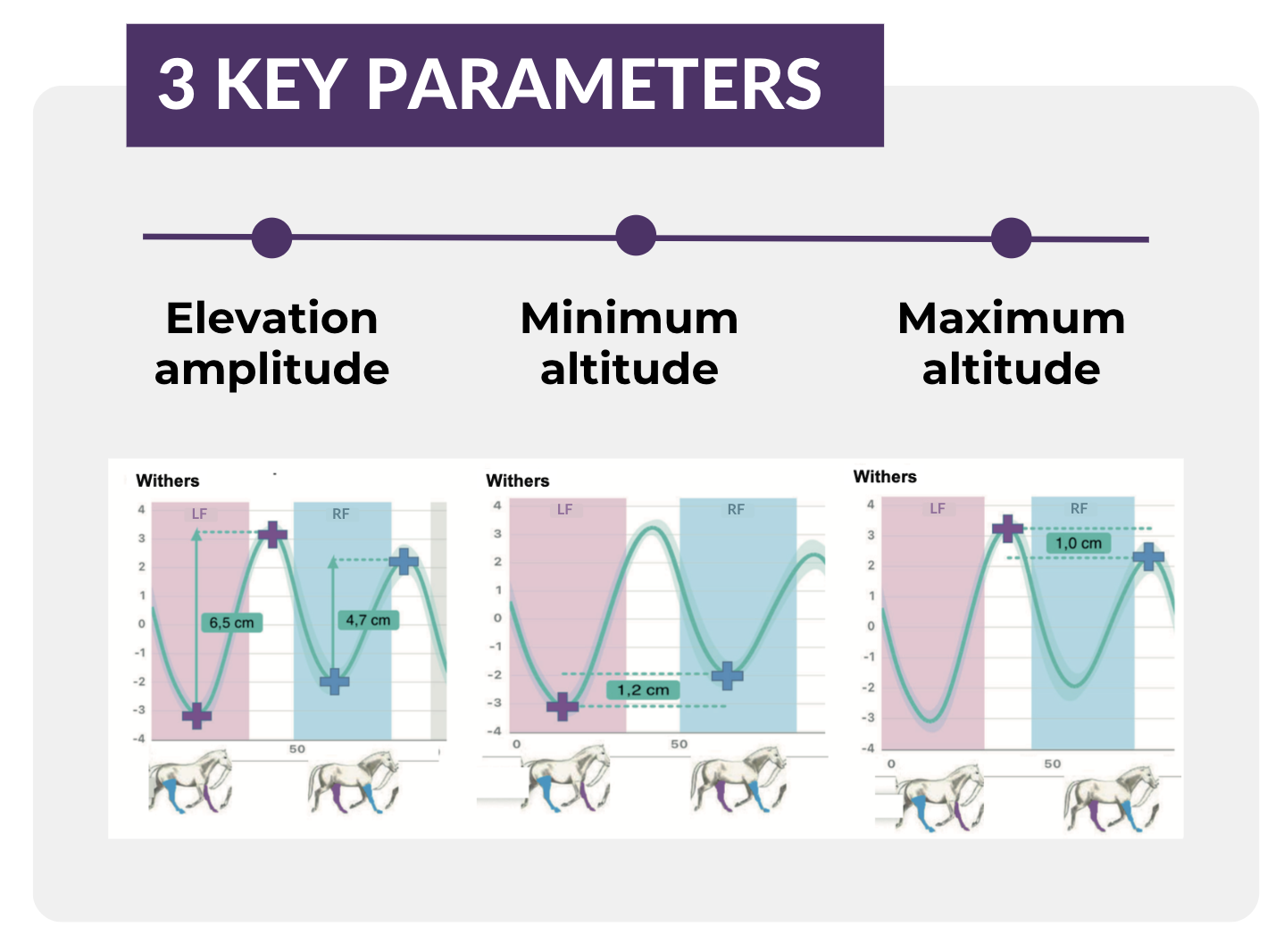
When a potential buyer is considering the acquisition of a horse, he or she may be confronted with the discovery of minor locomotor problems. These problems, although often minor, can raise concerns about the horse’s future health and performance.
By using EQUISYM at the pre-purchase veterinary examination, veterinarians are able to identify these locomotor problems at an early stage of development. By quantifying these problems objectively, EQUISYM enables veterinarians to provide precise recommendations on preventive or curative measures to correct abnormalities and prevent further deterioration. This early detection minimizes the risk to the potential buyer and ensures the long-term health of the horse.
One of the main strengths of early detection is that it offers potential buyers a realistic view of the situation. Rather than seeing these problems as insurmountable obstacles, they can be seen as opportunities to take proactive steps to improve the horse’s health and well-being. Potential owners can then clearly assess the level of commitment required to address these issues, and decide accordingly on the viability of the purchase.
Once the purchase has been made, post-purchase monitoring of the horse’s health becomes essential to guarantee his long-term well-being. EQUISYM proves to be an invaluable tool in this phase, offering the possibility of longitudinal monitoring of the horse’s locomotor health.
With EQUISYM, vets and owners can regularly record data on the horse’s locomotion over time. This feature creates a longitudinal database that offers a holistic view of the evolution of the horse’s locomotor health.
One of the most powerful features of this tool is the ability to overlay longitudinal data to assess trends over time. By comparing curves and data, veterinarians can quickly spot any improvement or deterioration in the horse’s locomotor health. For example, they can observe whether asymmetries have diminished after a specific treatment, or whether a new condition has emerged.
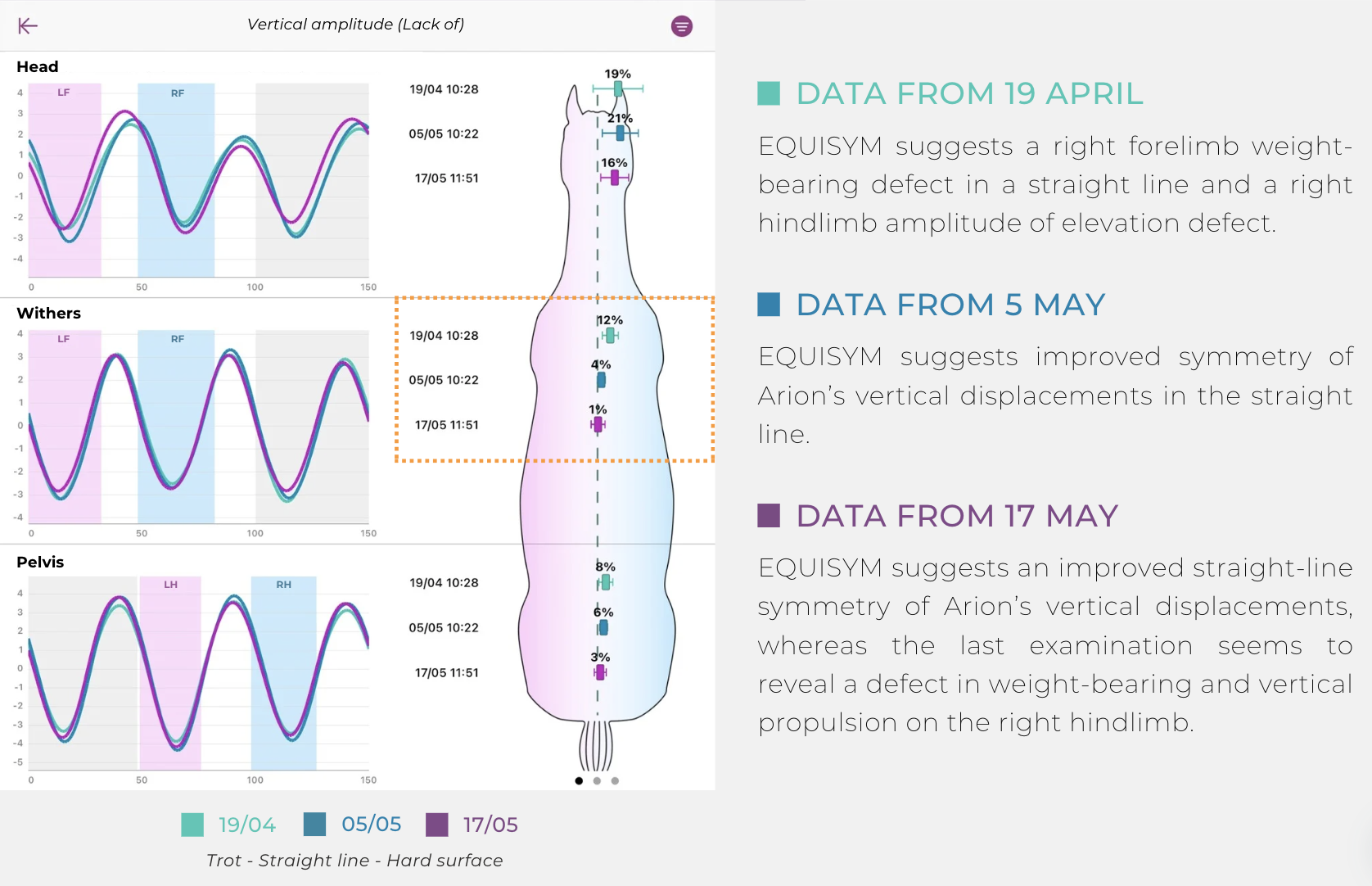
This longitudinal follow-up provides valuable insight into treatment efficacy and long-term health trends. It enables veterinarians and owners to intervene quickly when necessary, adjusting treatment protocols or seeking alternative solutions if required.
In this way, EQUISYM offers ongoing support after purchase, helping to ensure the long-term well-being of the horse and the satisfaction of its owners.
Conclusion
The integration of EQUISYM into veterinary purchasing visits optimizes the way professionals assess the locomotor health of horses.
By offering early detection of locomotor problems, comprehensive information for purchase decisions and valuable post-purchase follow-up, this tool brings increased transparency and reliability to equine transactions.
The use of EQUISYM during these visits enables veterinarians to provide evidence-based recommendations, while complementing their feeling and expert opinion. This combination of human expertise and objective data gives potential buyers the confidence to make informed decisions.
This represents a crucial step towards a more transparent, fair and responsible purchasing process, ensuring the well-being and performance of equine athletes for years to come.

